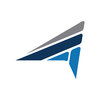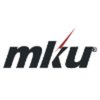
i
Tonbo Imaging
Filter interviews by
Tonbo Imaging Fpga Design and Verification Engineer Interview Questions and Answers
Tonbo Imaging Fpga Design and Verification Engineer Interview Experiences
1 interview found
I applied via Approached by Company and was interviewed in Jan 2024. There were 2 interview rounds.
(2 Questions)
- Q1. Project Discussion, Basic Digital Question(Encoder, Decoder)
- Q2. Fifo Depth, Code foe Asynchronous Fifo
(1 Question)
- Q1. Discussion on project and roles
Top trending discussions






Interview questions from similar companies

Senior Design Engineer Interview Questions & Answers
Lakshmi Life Sciencesposted on 28 Mar 2023
I applied via Naukri.com and was interviewed before Mar 2022. There were 2 interview rounds.

(9 Questions)
- Q1. Tell about your previous project
- Q2. Why you are looking for change
- Q3. What’s your notice period
- Q4. Selection of servo motor
- Ans.
The selection of servo motor depends on the application requirements such as torque, speed, and precision.
Determine the required torque and speed for the application
Consider the required precision and accuracy
Choose a motor with appropriate power and voltage ratings
Consider the physical size and weight of the motor
Evaluate the cost and availability of the motor
Examples of servo motors include AC, DC, and brushless moto
- Q5. Types of sensor and how to select them
- Ans.
Sensors are selected based on the type of measurement required. Common types include temperature, pressure, and proximity sensors.
Consider the range and accuracy required for the measurement
Choose a sensor that is compatible with the system being used
Consider environmental factors such as temperature and humidity
Examples include thermocouples, strain gauges, and ultrasonic sensors
- Q6. Types of cylinders and where we can use them
- Ans.
Cylinders are used in various applications. Types include hydraulic, pneumatic, telescopic, and electro-mechanical.
Hydraulic cylinders are used in heavy machinery, construction equipment, and industrial applications.
Pneumatic cylinders are used in automation, robotics, and manufacturing.
Telescopic cylinders are used in dump trucks, cranes, and other heavy-duty equipment.
Electro-mechanical cylinders are used in precisio
- Q7. Explain any one pick and place with concept
- Ans.
A pick and place machine is a robotic system used to pick up components and place them onto a printed circuit board.
Pick and place machines are commonly used in electronics manufacturing.
They use a combination of vision systems and mechanical arms to accurately place components onto a PCB.
The machines can handle a wide range of component sizes and shapes, from tiny surface-mount resistors to large connectors.
Some pick ...
- Q8. What is LVDT have you used it before
- Ans.
LVDT is a type of sensor used to measure linear displacement.
LVDT stands for Linear Variable Differential Transformer.
It consists of a primary coil, secondary coils, and a movable core.
As the core moves, it induces a voltage in the secondary coils which is proportional to the displacement.
LVDTs are commonly used in industrial and automotive applications for position sensing and control.
I have used LVDTs in a previous p...
- Q9. Have you used indexer
- Ans.
Yes, I have used indexer extensively in my previous projects.
I have used indexer to access elements in arrays and lists.
I have also used it to access properties and methods of objects.
Indexer has helped me to write more concise and readable code.
For example, I have used indexer to access specific elements in a dictionary object.
Interview Preparation Tips
Skills evaluated in this interview

Electrical Engineer Interview Questions & Answers
Lakshmi Life Sciencesposted on 27 Sep 2023
I applied via Walk-in and was interviewed in Mar 2023. There were 3 interview rounds.

(2 Questions)
- Q1. I am joining as a fresher. Just salary package and shift timing only discussed.
- Q2. When will you join the company?
(1 Question)
- Q1. No second round will be conducted

I applied via Naukri.com and was interviewed before Jan 2023. There was 1 interview round.
(2 Questions)
- Q1. Explain about stress strain diagram?
- Ans.
A stress-strain diagram is a graphical representation of the relationship between stress and strain in a material.
A stress-strain diagram shows how a material deforms under applied stress.
It helps engineers understand the mechanical properties of a material.
The diagram typically consists of a linear elastic region, a yield point, and a plastic deformation region.
The slope of the linear elastic region represents the mat...
- Q2. Explain about few aerospace materials?
- Ans.
Aerospace materials are used in the construction of aircraft and spacecraft to ensure strength, durability, and performance.
Aluminum alloys: Lightweight and corrosion-resistant, commonly used in aircraft structures.
Titanium alloys: High strength-to-weight ratio, used in engine components and structural parts.
Composite materials: Combination of fibers and matrix materials, providing high strength and light weight. Examp...
Interview Preparation Tips
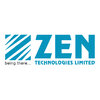
I applied via LinkedIn and was interviewed in Oct 2024. There were 5 interview rounds.
An online aptitude by company
(1 Question)
- Q1. From our resume
(1 Question)
- Q1. About our projects did
(1 Question)
- Q1. Tool test with software
(2 Questions)
- Q1. Relocation acceptance
- Q2. Notice period in days

Page development using a framework you are familiar with.
All the languages you have mentioned.
(1 Question)
- Q1. Compensation and other details
Interview Preparation Tips

Senior Engineer Interview Questions & Answers
Nucon Aerospaceposted on 16 Feb 2024
I applied via Naukri.com and was interviewed before Feb 2023. There was 1 interview round.
(1 Question)
- Q1. Sourcing & Procurement process

Associate Interview Questions & Answers
Tata Lockheed Martin Aerostructuresposted on 24 Jul 2021
Interview Questionnaire
12 Questions
- Q1. What is fuselage station
- Ans.
Fuselage station refers to a specific location on an aircraft's fuselage.
Fuselage station is a measurement of distance along the fuselage, typically measured in inches or millimeters.
It is used as a reference point for various components and systems on the aircraft.
For example, an aircraft's doors, windows, wings, and tail are all located at specific fuselage stations.
Fuselage station 0 is usually defined as the refere...
- Q2. What is butt line
- Ans.
Butt line is not a commonly used term. It could refer to the line where the buttocks meet the thighs.
Butt line is not a medical term.
It could refer to the line where the buttocks meet the thighs.
It is not a commonly used term and may have different interpretations depending on the context.
- Q3. What is water line
- Ans.
Water line refers to the pipe or tubing that carries water from the main supply to a building or property.
Water line is an essential component of a plumbing system.
It can be made of various materials such as copper, PVC, or galvanized steel.
The size of the water line depends on the water demand of the building or property.
Water lines can be underground or above ground.
A water line break or leak can cause significant da
- Q4. Cutting tools
- Q5. Drill bit sizes
- Q6. In drawing what is fast angel What is thired ange projection
- Ans.
The question is unclear and seems to contain errors.
The question may be referring to 'fast angle' and 'third angle projection' in technical drawing.
Fast angle refers to a type of projection where the object is viewed from an angle that is not perpendicular to any of its faces.
Third angle projection is a method of drawing 3D objects in which the object is placed in a box with three sides and projected onto a plane.
Witho...
- Q7. What is the meaning of rivet how will it work
- Ans.
A rivet is a metal fastener used to join two or more pieces of material together permanently.
Rivets are commonly used in construction, automotive, and aerospace industries.
They are inserted into pre-drilled holes and then deformed to hold the materials together.
Rivets can be made of various materials including aluminum, steel, and copper.
They are often used in place of screws or bolts when a permanent joint is required...
- Q8. General drill bit angel
- Q9. How many cutting angels in reamer
- Ans.
The number of cutting angles in a reamer varies depending on the type and size of the reamer.
The number of cutting angles can range from 2 to 6.
The cutting angles are designed to remove material from the workpiece as the reamer rotates.
The cutting angles can be straight or spiral, and can be symmetrical or asymmetrical.
The number and angle of the cutting edges can affect the surface finish and accuracy of the hole.
Exam...
- Q10. How many cutting angle in drill bit
- Ans.
Drill bits can have various cutting angles depending on their purpose and material.
The most common cutting angle for general purpose drill bits is 118 degrees.
Drill bits for harder materials like metal may have a sharper angle of 135 degrees.
Masonry drill bits have a flatter angle of 90 degrees to prevent cracking of the material.
The cutting angle affects the efficiency and precision of the drilling process.
- Q11. Drill bit made by
- Ans.
Drill bits are made by various manufacturers using different materials and designs.
Drill bits can be made from high-speed steel, cobalt, carbide, or diamond.
Manufacturers include DeWalt, Bosch, Milwaukee, and Irwin.
The design of the drill bit can vary depending on the intended use, such as twist bits, spade bits, or hole saws.
- Q12. How many cutting files
- Ans.
The number of cutting files depends on the project requirements and design complexity.
The number of cutting files can range from a few to hundreds or even thousands.
It also depends on the type of cutting machine being used.
For example, a laser cutting machine may require different files than a CNC router.
The number of cutting files can also vary based on the material being cut and its thickness.
It is important to have ...

System Engineer Interview Questions & Answers
Tata Lockheed Martin Aerostructuresposted on 18 Dec 2024
I applied via Company Website and was interviewed before Dec 2023. There was 1 interview round.
(2 Questions)
- Q1. What are your goals
- Ans.
My professional goal is to become a certified System Engineer and work on complex projects that challenge me to continuously learn and grow.
Obtain certification as a System Engineer
Work on complex projects to enhance skills
Continuously learn and grow in the field
Seek opportunities for advancement and leadership roles
- Q2. Experience with system eng orocess
- Ans.
I have extensive experience with system engineering processes in various industries.
Led cross-functional teams to design and implement complex systems
Utilized tools such as requirements management software and system modeling tools
Performed system integration and testing to ensure functionality and performance
Collaborated with stakeholders to gather and analyze requirements
Implemented system engineering best practices
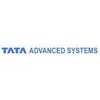
Assistant Manager Interview Questions & Answers
Tata Sikorsky Aerospaceposted on 18 Feb 2023

(3 Questions)
- Q1. As per their requirement they will do the interview
- Q2. As per their requirement they will do .
- Q3. Sorry as per their requirement they will do
As per their requirement only they are doing
Interview Preparation Tips
Tonbo Imaging Interview FAQs
Tell us how to improve this page.
Tonbo Imaging Interviews By Designations
Interview Questions for Popular Designations
- Fpga Design Engineer Interview Questions
- FPGA and RTL Design Engineer Interview Questions
- Verification Engineer Interview Questions
- Design & Verification Engineer Interview Questions
- Fpga Engineer Interview Questions
- Verification & Validation Engineer Interview Questions
- VLSI Design and Verification Engineer Interview Questions
- Asic Design Verification Engineer Interview Questions
- Show more
Tonbo Imaging Fpga Design and Verification Engineer Interview Process
based on 1 interview
Interview experience
Interview Questions from Similar Companies
|
Member Technical Staff
22
salaries
| ₹5 L/yr - ₹22 L/yr |
|
Store Executive
7
salaries
| ₹2.6 L/yr - ₹6.3 L/yr |
|
Assistant Manager Taxation
5
salaries
| ₹10 L/yr - ₹23.2 L/yr |
|
Member Technical Staff Software Developer
4
salaries
| ₹10 L/yr - ₹25 L/yr |
|
Softwaretest Engineer
4
salaries
| ₹5 L/yr - ₹5.7 L/yr |

Tata Advanced Systems

Mahindra Defence Systems

Tata Sikorsky Aerospace
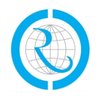
Rossell Techsys
- Home >
- Interviews >
- Tonbo Imaging Interview Questions >
- Tonbo Imaging Fpga Design and Verification Engineer Interview Questions
